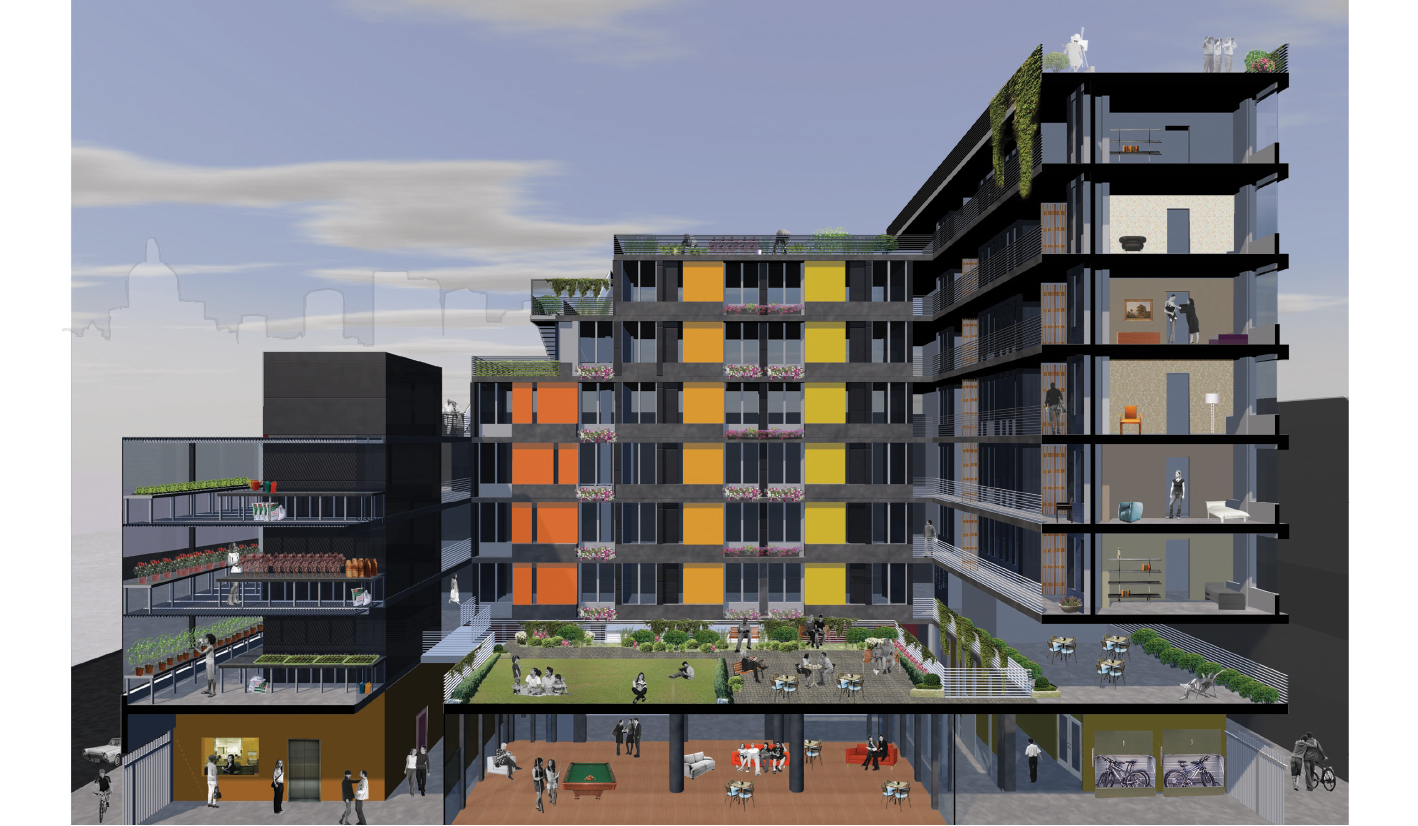




The main issue to consider when dealing with social housing -- and those hard to house -- is creating a secure, safe environment while still allowing freedom of movement. It is important not to disconnect the occupants from the identity and sense of community they felt while living on the street. Living in the DTES creates a sense of community for those that so often feel marginalized by the rest of society and so the goal would be that the housing within the neighbourhood does not distance those people from their existing “home” within the DTES. Rather, the aim is to now offer people a space in which they can store possessions, receive food, feel safe and express themselves.
In designing this social housing development, we look to dissolve and cross boundaries of public and private space using gardens and accessible indoor/outdoor transition spaces. The gardens will attempt to do three different things: create a space for healing, by their ability to give a sense of peace and tranquility within this urban context; create a space for play and interaction between occupants and the neighbourhood at large; and finally, to act as permeable barriers which provide distance and seclusion from other main social and circulation spaces while not isolating the user from the larger community of the building.
Within the building itself the goal is to create indoor and outdoor spaces that ow into each other, rather than clearly de ned walls between them, both for public and private spaces. For example, on the private scale, each unit has a small outdoor “patio” which provides a transition from public and private that expresses the identity of the occupant. On the public and semi-public scale the building has different gardens, decks and terraces that are attached to the kitchen, living room, reading room, etc. In this sense we are attempting to replicate what some would call the openness of living outdoors, where the difference is that now it is a choice rather than something forced upon the occupants. There is also the hope that this fluidity will prevent the feeling of being confined and watched at all times and also help ease the occupants into a more sheltered environment.
Future Social Competition, University of British Columbia
Vancouver, CAN - 2009
with Elsa Snyder and Federica Piccone